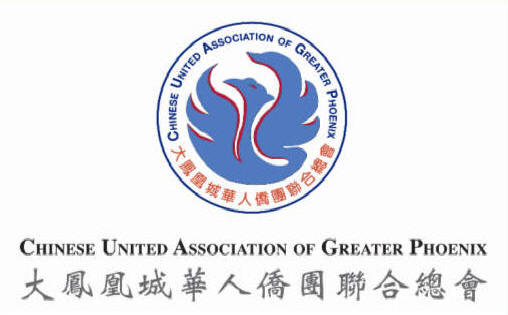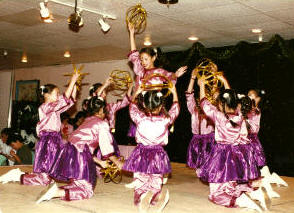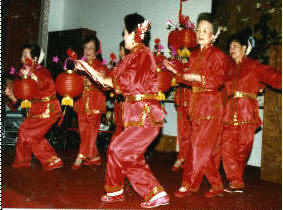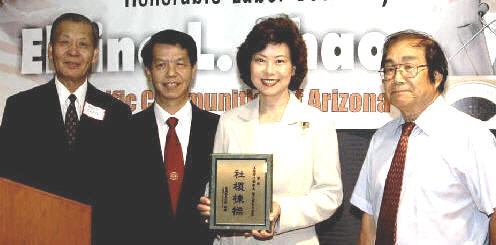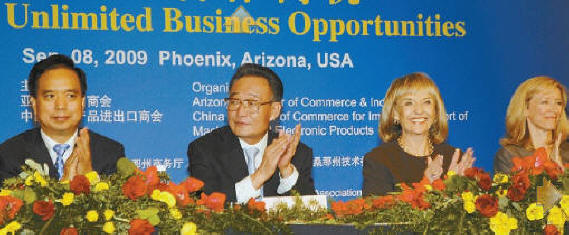|
美國亞省華人百年歷史回顧 Achievements of Chinese-Americans in Arizona History Collected/Compiled by Homer Zhang
Bicentennial of Chinese Immigration to U.S. (1988) Chinese-Americans have been living in Arizona for over a hundred years. In 1860, the Chinese began to immigrate to Arizona and Mexico. In the same year, or soon after, three Chinese started to grow vegetables for a living in Tucson. The Chinese had been selling vegetables door to door till 1897 according to historical record. The early Chinese settlers in Yuma area were the first immigrants in Arizona, followed by those who later entered Phoenix and Tucson area. In 1863, the Caucasians established the Phoenix City Council. Two years later the US military also set up post here. The immigration of Chinese to Arizona was not necessarily later than that of Europeans. During the 1860s, Chinese immigrants worked in the mines and as servants, ran restaurants and laundries, managed vegetable farms, and even performed menial labor at the US military quarters. Chinatown began to flourish during the 1870s. Competing with the White Americans for business opportunities, the Chinese had become the target of envy. In the1880s, the state railway project came to a completion. While some Chinese went to work in the mines, the majority of Chinese came to Phoenix Chinatown. They contributed greatly to its development and prosperity. In 1990, a number of Chinese relics of early 19th century were excavated on the construction site of the Phoenix Stadium in the city center. The government immediately allocated a budget of $ 50,000 for this archaeological discovery. These relics provided sufficient evidence indicating the Chinese had resided in Phoenix even before the City Council was first established in 1863. They endured the toil and hardship, and also shared the stability and prosperity of the city with the Caucasians. In other words, the Chinese were part of the Phoenix city and members of the society. In the early 1890s, there were fewer than two hundred Chinese in Phoenix Chinatown. The state upheld legislation that discriminated against residents with Chinese ethnicity. In 1892, the anti-Chinese movement began to escalate among the locals, and the media went along. In the same year, Congress passed the Geary Act, prohibiting Chinese residents from becoming US citizens. The Chinatown began to decline since then. By the early 20th century, the local Chinatown began to flourish again. In the early 1910s, the three major hotels of Chinese, British and French style in Phoenix Chinatown were all owned by the Chinese. Before the 1930s, there were approximately three hundred Chinese residents in Chinatown. The Chinatown then was located between the 1st Street and 3rd Street, bordering Madison and Jefferson. It was and still is today, the central and downtown area of the city of Phoenix. The Yu Family has over a century history in Phoenix. In the early 20th century, Sing Yee ( Yu Kang ) of the Yee Clan ran the American Kitchen, located on Central Street in downtown Phoenix. It was one of the few Chinese restaurants at that time . Fluent in both Chinese and English, Mr. Yee managed the restaurant well, maintained good relations with the local government and businesses, and helped folks who just arrived in Chinatown. According local official records, the number of Chinese in Chinatown was 101 and 448 in 1950. The population increased only by 357 people in a seventy year span.
|
|
|
2.Contributions of Chinese Americans in Arizona Chinese Americans joining the army and defending the country Over the years, Chinese-Americans in Arizona have joined the military risking their lives for the country. Among them, six were died but information could be found only for the three who served in the Air Force in the World War II.
Two Chinese-Americans, Hong Ham and Dea H. Toy (關祟瓊), joined the army during the World War I. Recruited in 1915, Dea was sent to Europe in 1917 and received his Purple Heart Medal for his battle wounds in France. Dea’s son William K. Toy (關衛理) also joined the army. He had trained Chinese soldiers in China and fought against the Japanese army in northern Burma. Gary Toy, Dea’s another son, joined US Air force and was appointed Sergeant. The two brothers received many military decorations for their service. William K. Toy stayed in the army for over twenty years, and was promoted lieutenant colonel. William held the highest military rank among all the Chinese -American soldiers from Arizona. William also served as an instructor in a military academy in Arizona.
|
|
|
During World War II, seventy nine Chinese-Americans joined the army, the Navy, the Air Force, and fought fearlessly against the enemies. Four of them were in the Chinese- US Fourteenth Air Force Flying Tigers Mixed Brigade. Hong j. "Albert "Ong (鄧桐臻) joined the US Air force in 1941, and was the Combat Staff Officer in the Fourteenth Air Force Flying Tigers. He was deployed to Kunming, Guiling, Chengdu and other places in China. Ong received an Anti-Japanese War Memorial Medal, an Order of Precious Tripod Medal among other decorations after the war. Five Chinese-American soldiers sacrificed their lives in World War II. Three of them served in the air force. The photo below was the four Ong brothers.
When the Korean War broke out in 1950, twenty- three Chinese-Americans from Arizona joined the military. Twenty two Chinese-Americans fought in the Vietnam War from 1961-1972. A few of them provided clerical and technical supports, and one was a female officer working behind the communication terminals. Arizona Chinese-Americans also fought in the following Middle East and Afghanistan Wars. In 1950, forty-four veterans came together to form a Chinese-American veterans organization. It was later renamed “Deng Xinping (鄧心平) Veterans Association (American Legion Thomas Tang Post 50)”. Three white veterans also joined it. It has become a well-known Chinese-American Veterans organization. Successful Chinese-American Politicians In 1940, Wing F. Ong (鄧粵寧), a Chinese-American lawyer, run for the State House of Representatives of Arizona for the first time and lost by 17 votes. In 1946, 42- year- old Wing F. Ong decided to run again. His campaign slogan, “Give the person who knows the law a chance to participate in politics,” won him the votes from Americans and Hispanics/Latinos, Chinese and other Asian immigrants. He won his campaign and became the first Chinese-American State House Representative who was not born in the United States. Mr. Ong was reelected and served a second term. In 1966, Mr. Ong ran for the Arizona State Senate and succeeded, becoming the first Chinese-American who entered the State Legislature.
Wing F. Ong (鄧粵寧)
Arizona Chinese-American, Wing F. Ong’s earliest election campaign poster in the 1940’s has great historical value.
Born in
Phoenix, Arizona, Judge Thomas Tang (鄧心平)
graduated from the University of Santa Clara with a B.S. He served in the
army during the World War II and the Korean War. After Korean War, he
studied law and graduated from the College of Law, University of Arizona.
He was elected to the Phoenix City Council and later the deputy mayor. In
1977, President Jimmy Carter appointed Tang as the United States Circuit
Judge for the Ninth Circuit covering ten states including Washington,
California, Arizona, and Nevada. His achievement at the judicial branch has
never been surpassed by any other Chinese-American.
Judge Thomas Tang Among the city mayors in the United States, three of them are Chinese-Americans from Arizona. In 1979, Edmund Tang (鄧達明) was elected as the mayor of Peoria. Edmund Tang had to work very hard to win the elections, as there were then only two Chinese-American families in the city, and the majority of the voters were Caucasian and Hispanic/Latinos. He succeeded and served three consecutive terms. Edmund received the honorary title, the Mayor Emeritus of Peoria for his 30 years’ service from 1955-1985. He is an outstanding role model for the Chinese-American politicians.
Edmund Tang (鄧達明) The next one to be mentioned is Willie Wong (鄧偉利), Mayor of Mesa, Arizona. Willie Wong graduated from Arizona State University. He had worked at AT&T for over twenty years. He held various titles and positions such as chairman of Mesa YMCA, President of City Council of the City of Mesa, President of Maricopa Association of Governments, Deputy Mayor of Mesa from 1988-89, and was elected Mayor of Mesa in 1993. At that time, the City of Mesa became the most populous American city administered by a Chinese-American mayor. Given the fact that the Asian population in the city of Mesa at his time accounted for only 1%, the success of his political career was even more extraordinary. During his tenure, Wong led the Sister Cities Commission of Mesa to China and established the sister city relationships with Kaiping (開平市), China.
Willie Wong (鄧偉利) The third one is Dingqi Deng (鄧鼎奇). Dingqi Deng was elected as the Mayor of Superior City, Arizona in 2009. Dingqi’s grandfather managed a grocery store in his early years. A local street was named after him for his contributions to the community. Dingqi was born in the US. He studied Agricultural Science at college, but became a successful businessman. He won his mayoral election after entering politics.
DinQi Deng (鄧鼎奇) Hong J. “Albert” Ong (鄧桐臻) received his Bachelor of Business Administration from Northern Arizona University in 1952, and later served as a member of Holbrook City Council. After moving to Phoenix in 1978, he started to participate in the construction of the Chinese Senior Center. Well versed in both Chinese and Western learning, Mr. Ong collaborated closely with the city government on the project. After three years of continuous effort, the construction of the first Chinese Senior Center was completed in 1981.
University with a degree in mathematics, he went to law school at University of Arizona in Tucson. He got his license and practiced law afterwards. He started to work in the State Senate assisting in parliamentary legislation in 1993 and became a member of Arizona House of Representatives the same year. Mr. Wong is the second Chinese-American who has entered the state legislature in Arizona history. He was elected again a year later, and made great contributions during his eight-year tenure.
Barry Ong (黃仕鈞) Kimberly Yee (余艷芬) received her Master of Public Administration from Arizona State University. She was the office manager of Communication and Government Affairs for the Office of Arizona Treasurer. Elected to the State House in 2010, Ms. Yee became the first congresswoman of Chinese ethnicity in Arizona 100 years of history.
Kimberly Yee (余艷芬) John M. Yee, who is recognized by the mainstream society as a senior and well respected Chinese community leader, has served the Chinese community throughout his life, and was received “Service Overseas Chinese Lifetime Achievement Award” in 2011.
Gray Ong (鄧朝駒) was appointed by President Bush as a member of President’s Advisory Commission on Asian Americans and Pacific Islanders. He attended the Hong Kong and Macao Handover Ceremonies on behalf of Arizona Chinese-American communities.
Garry Ong (鄧朝駒) In addition to many accomplishments Arizona Chinese-Americans have made in politics and military, the successes and contributions in other professions and trades have been too numerous to mention. |
|
|
|
3.Activities and Significant Events of the Chinese-American Community celebrating Independence Day Chinese-Americans in Greater Phoenix have been celebrating Independence Day in many locations in Phoenix since 1937. In 1970, CUAGP began to host the festivity. For over 70 years, Chinese-Americans have sought for recognition and fought against prejudices. Chinese culture has also been promoted through these events. The annual celebrations have caught the attention of mainstream society and won their support. Governor Bruce E. Babbitt attended the celebration in 1979. Over the years, many local luminaires appeared at the celebrations and the Miss Phoenix Chinese Pageant events.
U.S. Bicentennial Celebration (1976)
Governor Bruce E. Babbitt at the Celebration (1978) Phoenix Mayor Skip Rimsza once sent his congratulatory message, “I would like to welcome everyone who is here to celebrate the Independence Day with the Chinese American community. You have been celebrating this historical day since the late 1930s. Starting with the flag raising ceremony by American Legion Thomas Tang Post 50, as usual, it includes such fun activities as pageantry, ethnic dances and food. I would like to thank everyone for coming and wish you all a safe amazing day.” Governor Jane Dee Hull also sent her congratulations, “On behalf of the State of Arizona, I would like to extend a warm welcome to those attending the Chinese United Association of Greater Phoenix’s 4th of July Celebration. 4th of July is a time for celebration and reflection for our nation and I am pleased to honor and recognize this year’s festivity. Thank you for your active involvement and valuable contribution to the Chinese community. I commend you for your commitment and dedication to the citizens of Arizona. You have done a wonderful job to keep the community spirit strong.”
Chinese-Americans have been celebrating Independence Day for more than 70 years.
Maintaining Communication with Mainstream Society and Promoting Harmony within the Community From 1970s to 1990s, Great Wall and Hua Mei were the two biggest and most successful Chinese restaurants. They were also the venues for hosting interactive events between mainstream society and the local Chinese-American community. CUAGP has hosted many fundraising dinners for candidates who run for governor and mayor, and for the House and Senate. Local Chinese and the mainstream have maintained a good relationship through these activities. CUAGP has been a positive force since its founding. For over 50 years, CUAGP strives to keep the community united and stable. A harmonized and progressive Chinese community is also one indispensable factor to maintain the stability and prosperity of the big Arizona multi-ethnic family.
|
|

